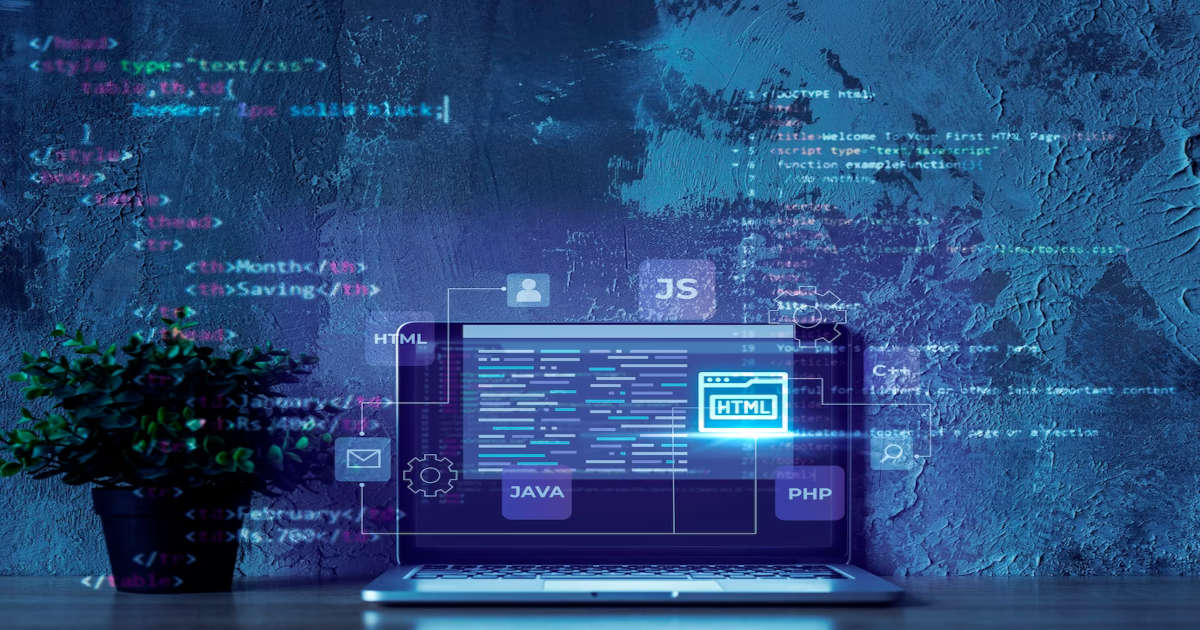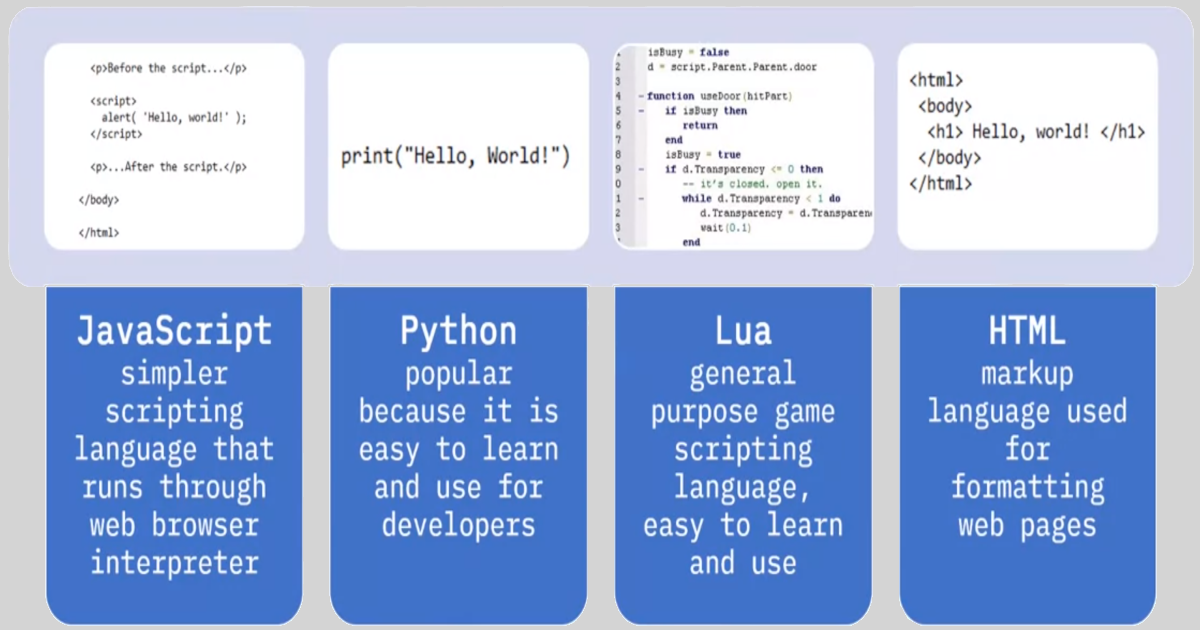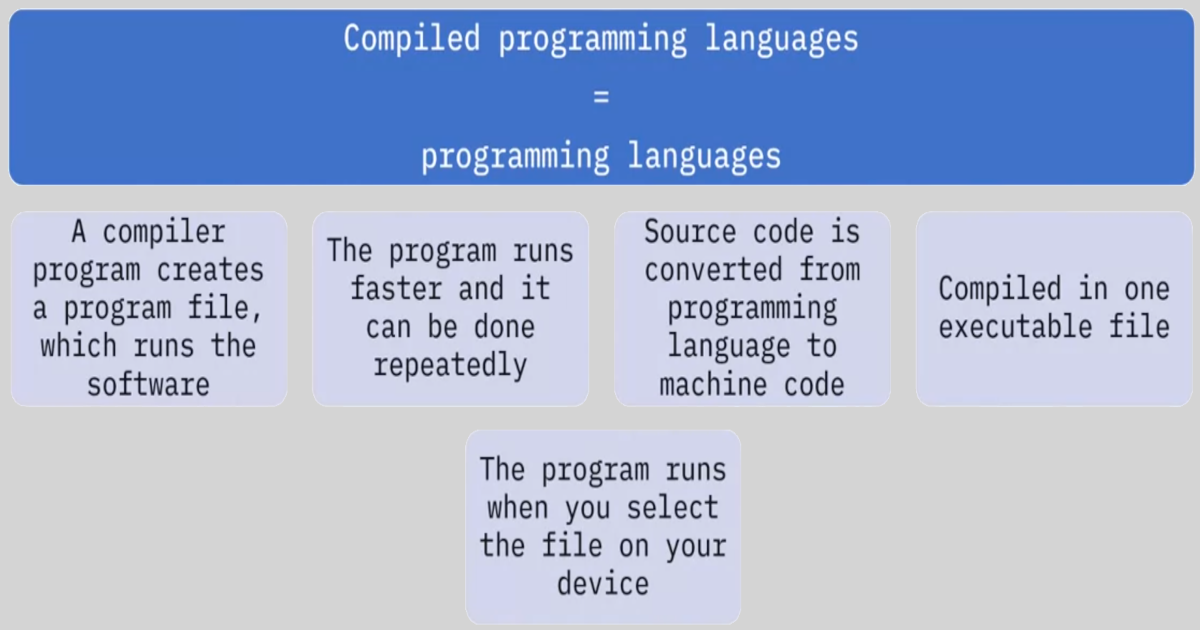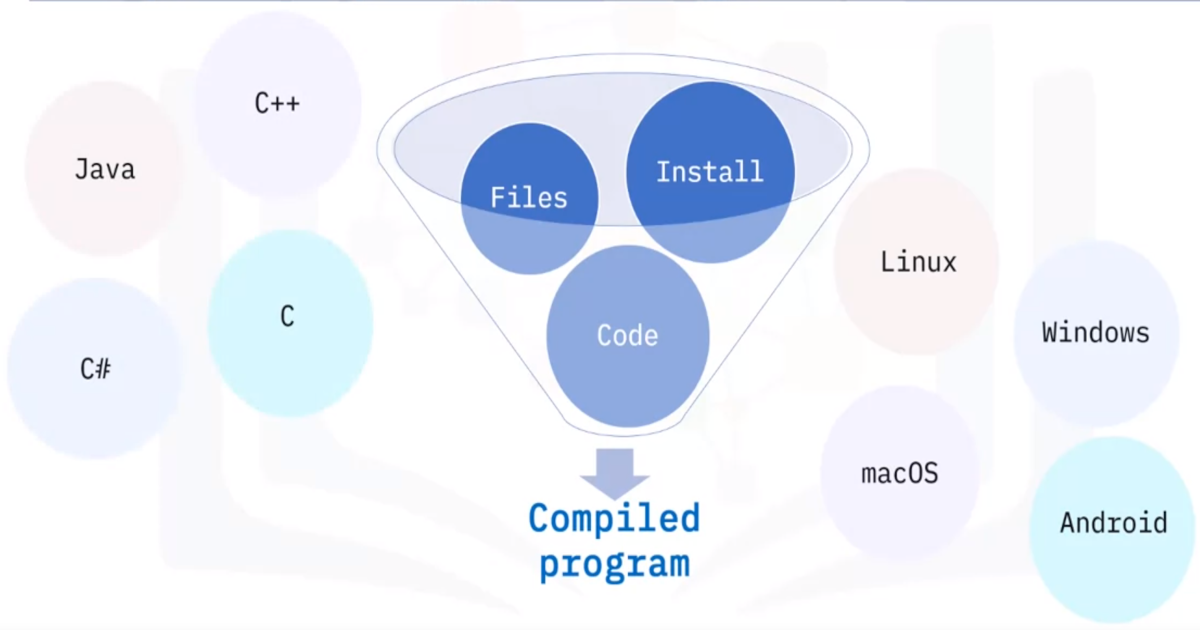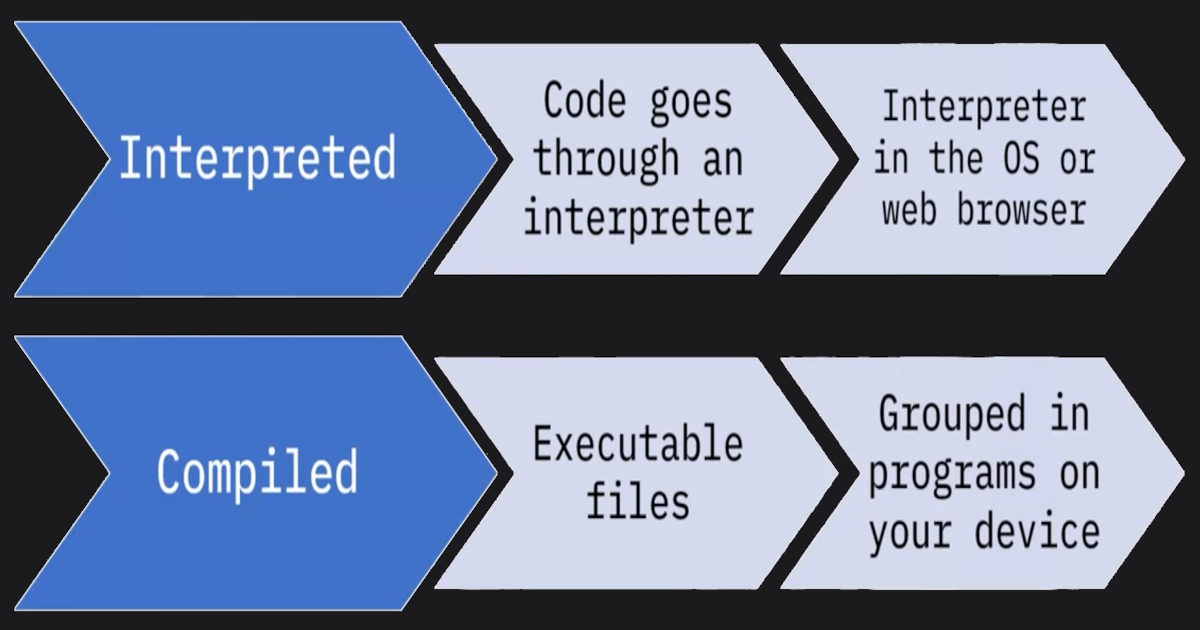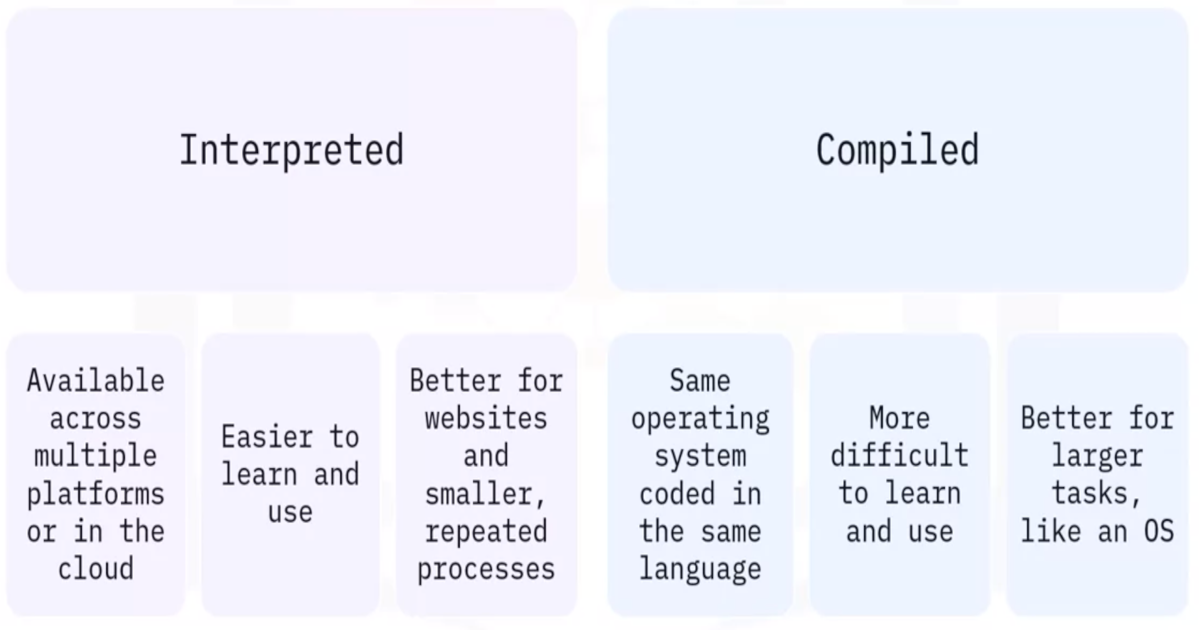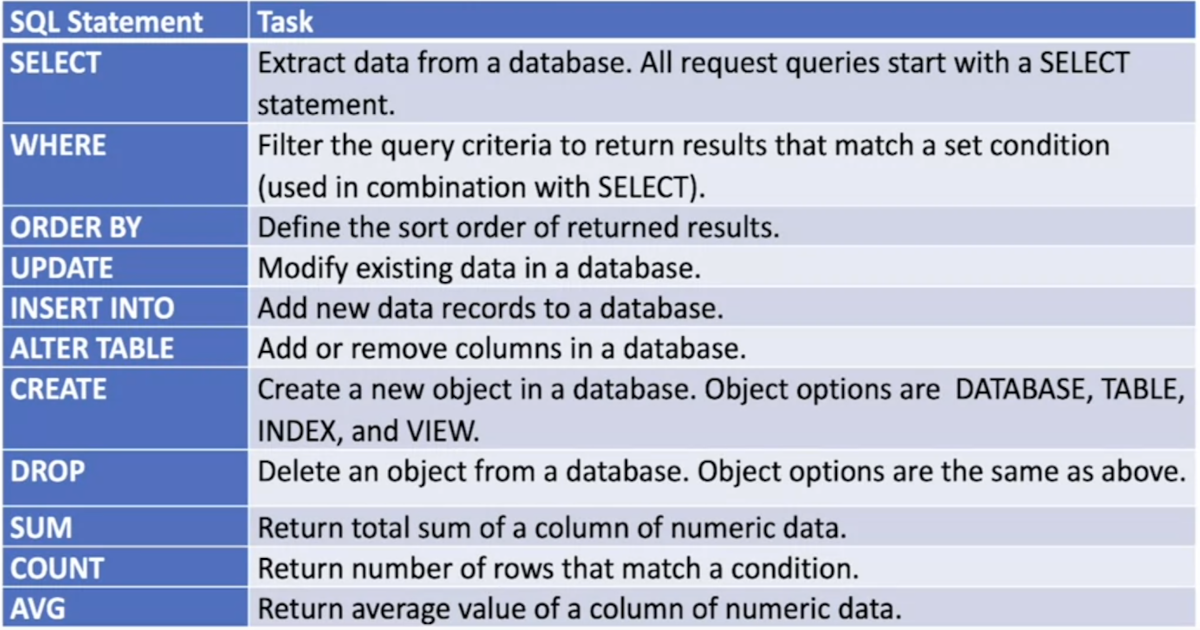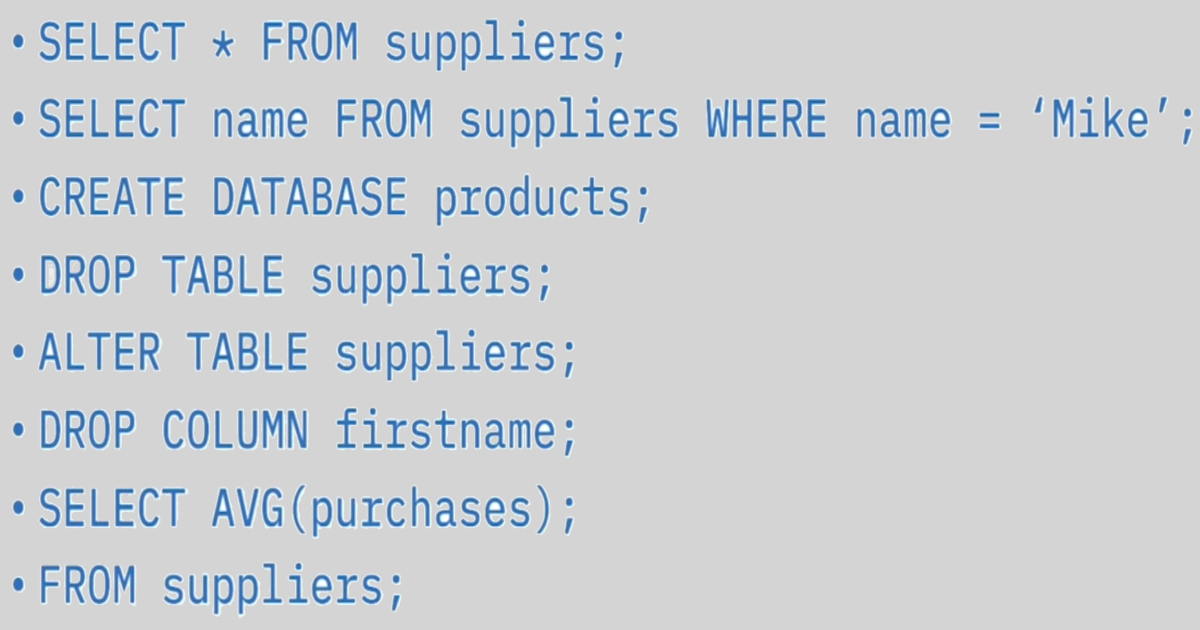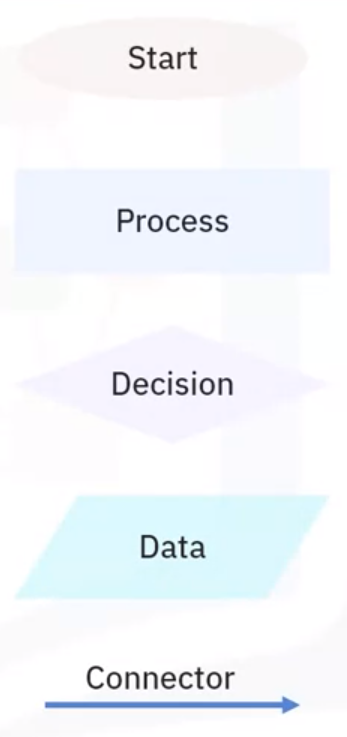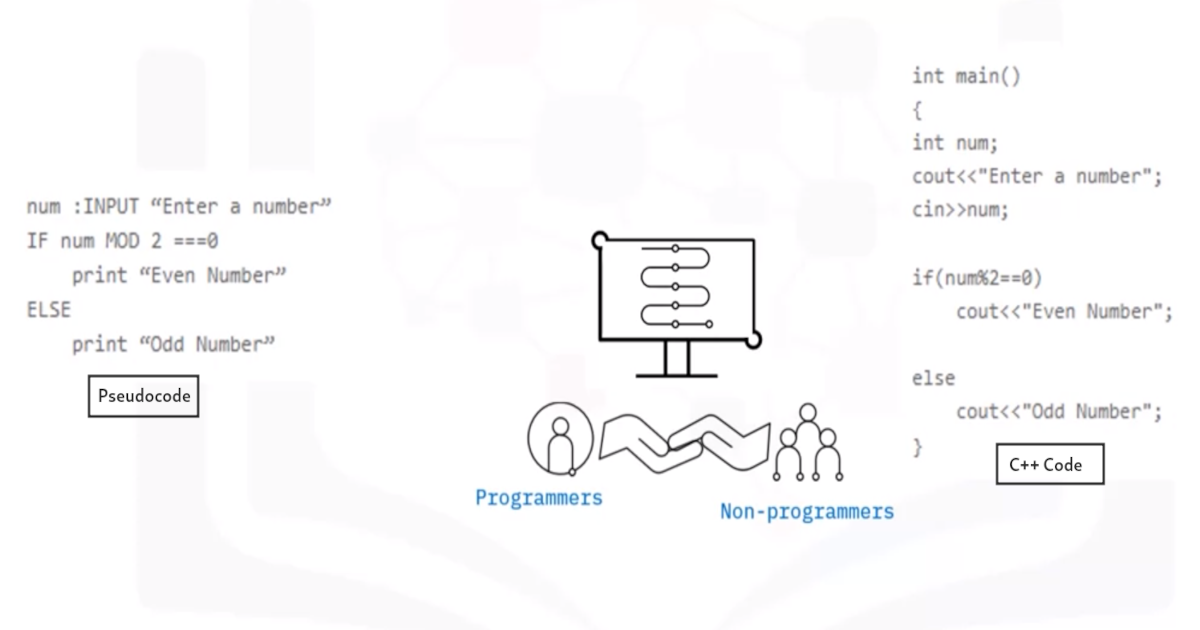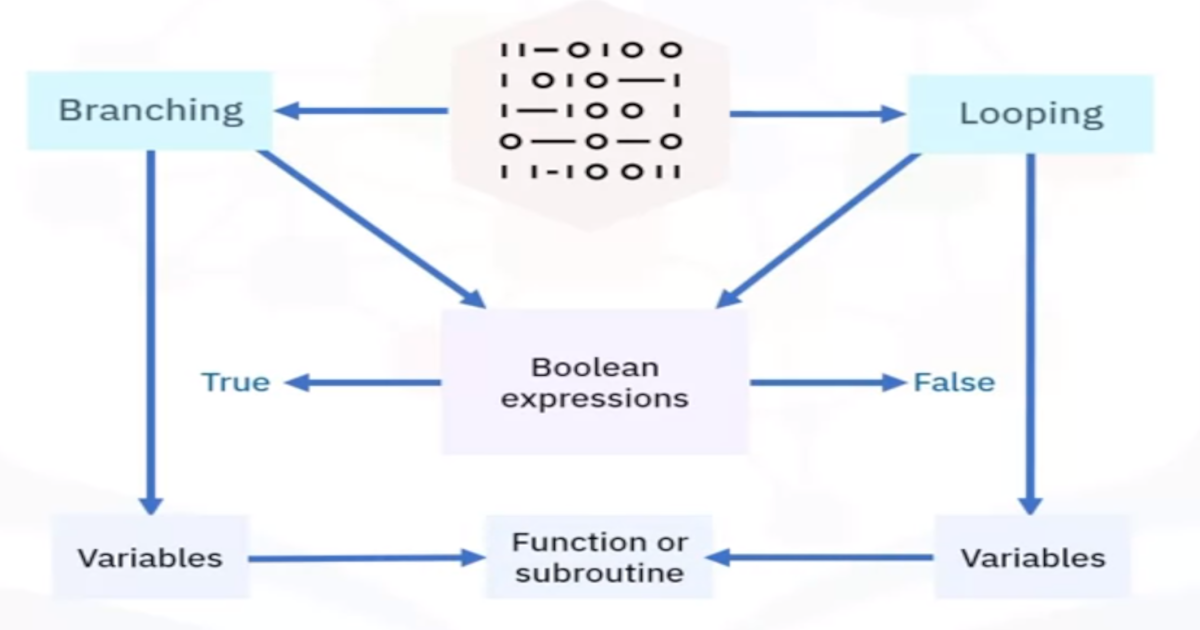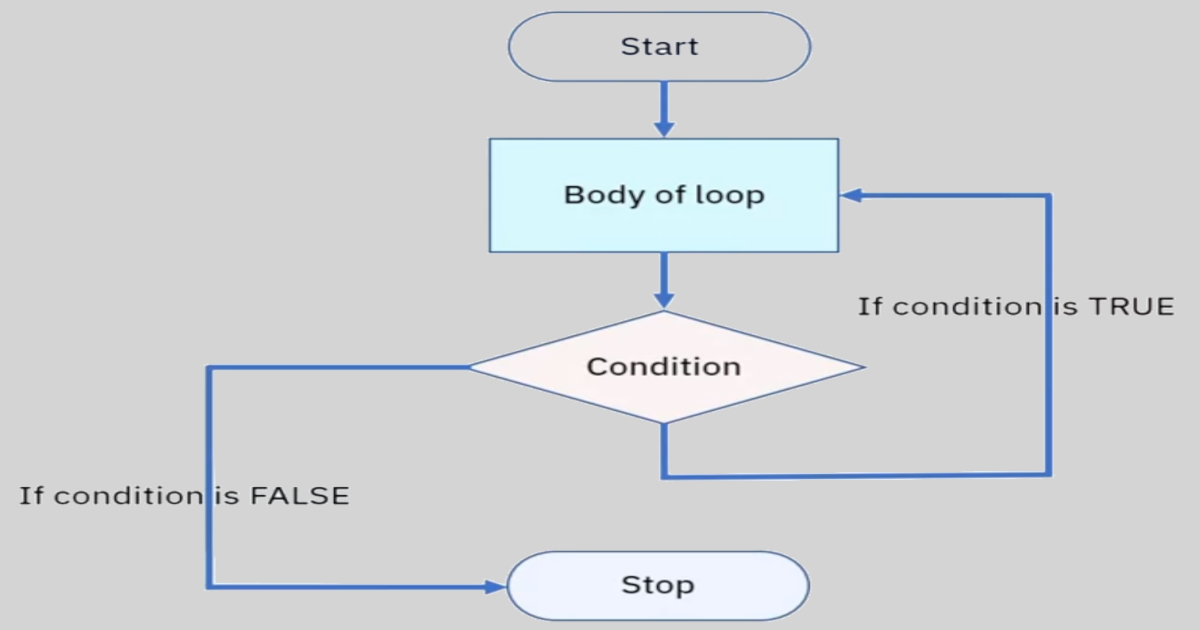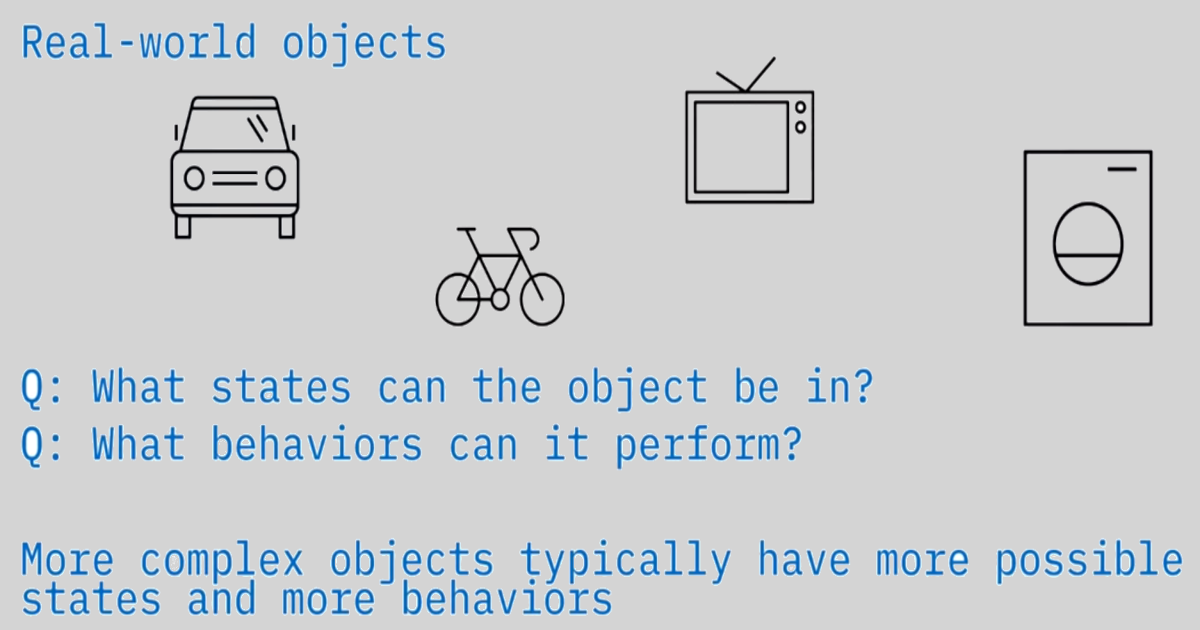Basics of Programming
Programming Languages and Organization
Interpreted and Compiled Programming Languages
Interpreted programming:
Interpreted programming examples:
Compiled programming:
- Programs that you run on your computer
- Packaged or compiled into one file
- Usually larger programs
- Used to help solve more challenging problems, like interpreting source code
Compiled programming examples:
- C, C++, and C# are used in many OSs, like MS Windows, Apple macOS and Linux
- Java works well across platforms, like the Android OS
Compiled programming:
Comparing Compiled and Interpreted Programming Languages
Choosing a programming language:
Developers determine what programming language is best to use depending on:
- What they are most experienced with and trust
- What is best for their users
- What is the most efficient to use
Programming languages:
Interpreted vs. compiled
Query and Assembly Programming Languages
Programming language levels:
High-level programming languages:
- More sophisticated
- Use common English
SQL, Pascal, Python
Low-level programming languages:
- Use simple symbols to represent machine code
- ARM, MIPS, X86
Query languages:
- A query is a request for information from a database
- The database searches its tables for information requested and returns results
- Important that both the user application making the query and the database handling the query are speaking the same language
- Writing a query means using predefined and understandable instructions to make the request to a database
- Achieved using programmatic code (query language/database query language)
- Most prevalent database query language is SQL
- Other query languages available:
- AQL, CQL, Datalog, and DMX
SQL vs. NoSQL:
- NoSQL (Not Only SQL)
- Key difference is data structures
- SQL databases:
- Relational
- Use structured, predefined schemas
- NoSQL databases:
- Non-relational
- Dynamic schemas for unstructured data
How does a query language work?
Query language is predominantly used to:
- Request data from a database
- Create, read, update, and delete data in a database (CRUD)
- Database consists of structured tables with multiple row and columns of data
When a user performs a query, the database:
- retrieve data from the table
- Arranges data into some sort of order
- Returns and presents query results
Query statements:
- Database queries are either:
- Select commands
- Action commands (CREATE, INSERT, UPDATE)
- More common to use the term “statement”
- Select queries request data from a database
Action queries manipulate data in a database
Common query statements:
query statement examples:
Assembly Languages
- Less sophisticated than query languages, structured programming languages, and OOP languages
- Uses simple symbols to represent 0s and 1s
- Closely tied to CPU architecture
Each CPU type has its own assembly language
Assembly language syntax:
- Simple readable format
- Entered one line at a time
One statement per line
{lable} mnemonic {operand list} ;{comment}mov TOTAL, 212 ;Transfer the value in the memory variable TOTALAssemblers:
- Assembly languages are translated using an assembler instead of a compiler or interpreter
- One statement translates into just one machine code instruction
Opposite to high-level languages where one statement can be translated into multiple machine code instructions
Translate using mnemonics:
Input (INP), Output (OUT), Load (LDA), Store (STA), Add (ADD)
Statements consist of:
- Opcodes that tell the CPU what to do with data
- Operands that tell the CPU where to find the data
Understanding Code Organization Methods
Pseudocode vs. flowcharts:
| Pseudocode | Flowcharts |
|---|---|
| Informal, high-level algorithm description | Pictorial representation of algorithm, displays steps as boxes and arrows |
| Step-by-step sequence of solving a problem | Used in designing or documenting a process or program |
| Bridge to project code, follows logic | Good for smaller concepts and problems |
| Helps programmers share ideas without extraneous waste of creating code | Provide easy method of communication about logic behind concept |
| Provides structure that is not dependent on a programming language | Offer good starting point for project |
Flowcharts:
- Graphical or pictorial representation of an algorithm
- Symbols, shapes, and arrows in different colors to demo a process or program
- Analyze different methods of solving a problem or completing a process
- Standard symbols to highlight elements and relationships
Flowchart software:
Pseudocode:
Pseudocode Advantages:
- Simply explains each line of code
- Focuses more on logic
- Code development stage is easier
- Word/phrases represent lines of computer operations
- Simplifies translation to code
- Code in different computer languages
- Easier review by development groups
- Translates quickly and easily to any computer language
- More concise, easier to modify
- Easier than developing a flowchart
- Usually less than one page
Programming Logic and Concepts
Branching and Looping Programming Logic
Introduction to programming logic:
Boolean expressions and variables:
Branching programming logic:
Branching statements allow program execution flow:
- if
- if-then-else
- Switch
- GoTo
Looping programming logic:
While loop: Condition is evaluated before processing, if true, then loop is executed
For loop: Initial value performed once, condition tests and compares, if false is returned, loop is stopped
Do-while loop: Condition always executed after the body of a loop
Introduction to Programming Concepts
What are identifiers?
- Software developers use identifiers to reference program components
- Stored values
- Methods
- Interfaces
- Classes
- Identifiers store two types of data values:
- Constants
- Variables
What are containers?
- Special type of identifiers to reference multiple program elements
- No need to create a variable for every element
- Faster and more efficient
- Ex:
- To store six numerical integers – create six variables
- To store 1,000+ integers – use a container
Arrays and vectors
Arrays:
- Simplest type of container
- Fixed number of elements stored in sequential order, starting at zero
- Declare an array
- Specify data type (int, bool, str)
- Specify max number of elements it can contain
- Syntax
- Data type > array name > array size
[]
int my_array[50] - Data type > array name > array size
Vectors:
- Dynamic size
- Automatically resize as elements are added or removed
- a.k.a. ‘dynamic arrays’
- Take up more memory space
- Take longer to access as not stored in sequential memory
- Syntax
- Container type/data type in <>/name of array
vector <int> my_vector;
What are functions?
- Consequence of modular programming software development methodology
- Multiple modular components
- Structured, stand-alone, reusable code that performs a single specific action
Some languages refer to them as subroutines, procedures, methods, or modules
Two types:
- Standard library functions – built-in functions
- User-defined functions – you write yourself
What are objects?
- Objects are key to understanding object-oriented programming (OOP)
- OOP is a programming methodology focused on objects rather than functions
- Objects contain data in the form of properties (attributes) and code in the form of procedures (methods)
- OOP packages methods with data structures
- Objects operate on their own data structure
Objects in programming
- Consist of states (properties) and behaviors (methods)
- Store properties in fields (variables)
- Expose their behaviors through methods (functions)
